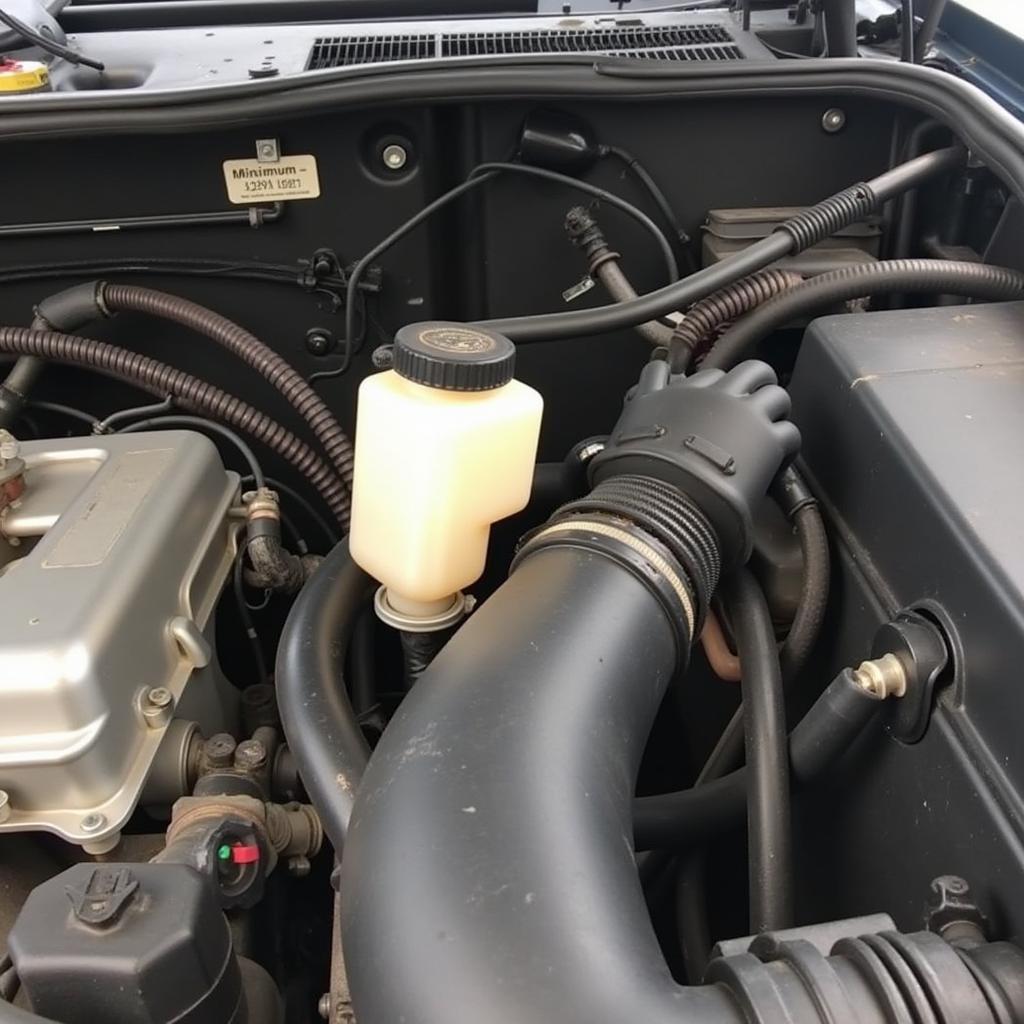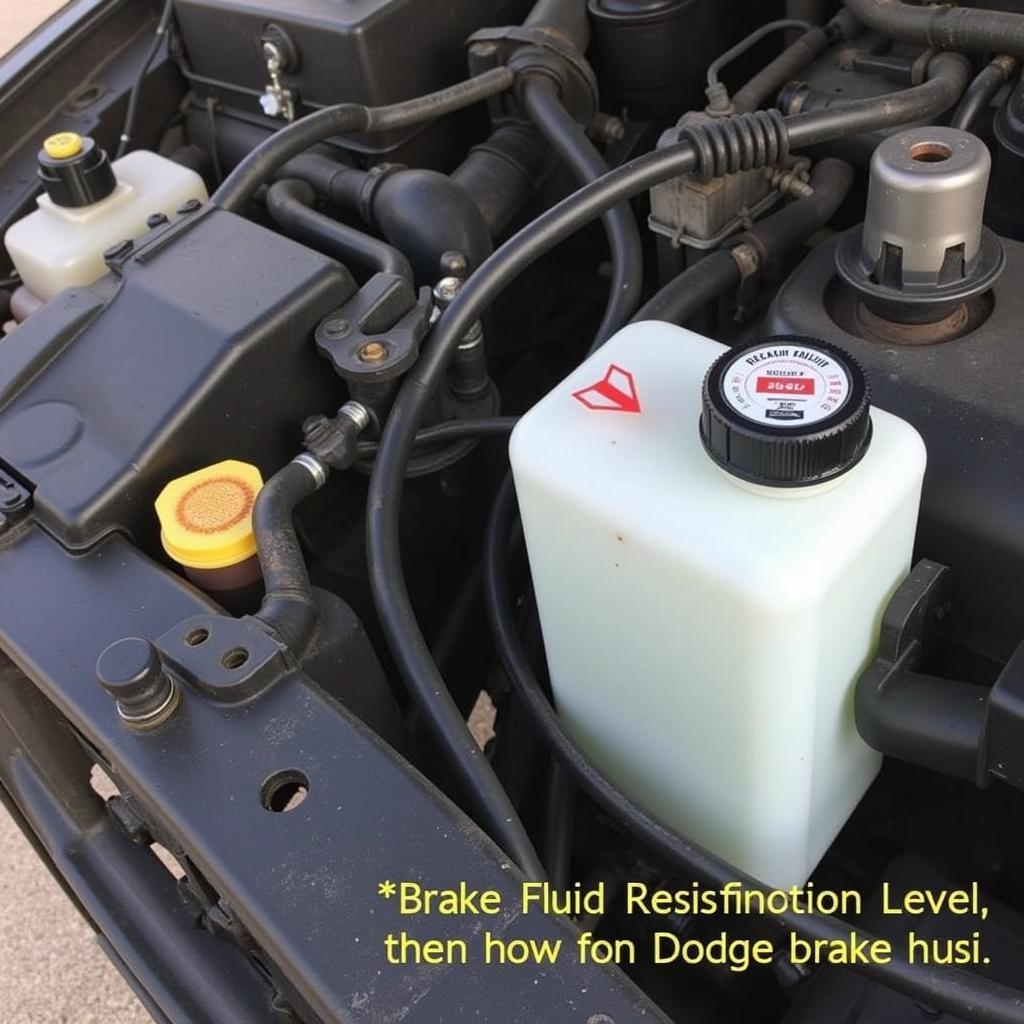The 1993 Toyota Camry brake warning light can be a source of anxiety for drivers. Understanding why this light illuminates and how to address the underlying issue is crucial for safe driving. This article provides a comprehensive guide to troubleshooting and resolving problems related to the 1993 Toyota Camry brake warning light.
Common Causes of a 1993 Toyota Camry Brake Warning Light
Several factors can trigger the brake warning light in your 1993 Camry. Identifying the root cause is the first step towards resolving the problem. The most common culprits include low brake fluid, worn brake pads, a faulty parking brake switch, or issues with the ABS system. Don’t panic if your light comes on, but don’t ignore it either. Prompt attention can prevent further damage and ensure your safety on the road.
Low Brake Fluid: The Most Frequent Culprit
Low brake fluid is often the primary reason for the brake warning light. Over time, brake pads wear down, requiring the brake calipers to extend further to apply pressure to the rotors. This extension consumes brake fluid, gradually lowering its level in the reservoir. Checking your brake fluid level is a simple task. Locate the brake fluid reservoir under the hood, usually near the firewall. The reservoir will have minimum and maximum markings. If the fluid level is below the minimum, you’ll need to add more.
 Checking the Brake Fluid Reservoir in a 1993 Toyota Camry
Checking the Brake Fluid Reservoir in a 1993 Toyota Camry
Worn Brake Pads: A Critical Safety Concern
Worn brake pads not only reduce braking effectiveness but can also trigger the brake warning light. Most 1993 Camry models have a sensor embedded in the brake pad material that activates the warning light when the pads reach a critical wear level. Ignoring this warning can lead to metal-on-metal contact, damaging your rotors and significantly reducing braking performance.
“Regular brake inspections are crucial,” says automotive expert Michael Stevenson, ASE Certified Master Technician. “Catching worn brake pads early can save you money and prevent more serious brake problems down the line.”
Parking Brake Engaged: An Easy Oversight
Sometimes, the simplest explanation is the correct one. If your parking brake is even slightly engaged, it can illuminate the brake warning light. Make sure the parking brake lever is fully released before assuming a more serious issue.
ABS System Malfunction: A More Complex Issue
The Anti-lock Braking System (ABS) is a safety feature designed to prevent wheel lockup during hard braking. A malfunctioning ABS system can trigger the brake warning light. This issue typically requires a professional diagnosis using a specialized scan tool to read the ABS fault codes.
“While other brake issues can often be addressed by DIYers,” cautions Sarah Chen, automotive diagnostics specialist, “ABS problems usually require the expertise of a qualified technician with the proper diagnostic equipment.”
Troubleshooting the 1993 Toyota Camry Brake Warning Light
If your brake warning light is on, start by checking the parking brake. If it’s released and the light remains on, check the brake fluid level. If it’s low, top it off and monitor it closely. If the fluid level continues to drop, you likely have a leak in the braking system, requiring immediate professional attention. If the fluid level is adequate, the next step is to inspect the brake pads. If they are worn, replace them. If none of these checks resolve the issue, it’s time to have a professional diagnose the ABS system.
 Inspecting the Brake System of a 1993 Toyota Camry
Inspecting the Brake System of a 1993 Toyota Camry
Conclusion
The 1993 Toyota Camry brake warning light serves as a crucial safety indicator. Understanding its potential causes empowers you to take appropriate action. From simple checks like the parking brake and brake fluid level to more complex issues like ABS malfunctions, addressing these problems promptly ensures your safety and prevents further damage to your vehicle. Don’t ignore the warning light – address it today for peace of mind on the road.
FAQ
- What does the brake warning light mean in a 1993 Toyota Camry? It typically indicates low brake fluid, worn brake pads, a partially engaged parking brake, or a problem with the ABS system.
- Can I drive my 1993 Camry with the brake warning light on? While possible, it’s strongly discouraged. Driving with a brake problem compromises safety and can lead to further damage.
- How do I check my brake fluid level? Locate the brake fluid reservoir under the hood, usually near the firewall. Check the fluid level against the minimum and maximum markings.
- How often should I replace my brake pads? Brake pad lifespan varies depending on driving habits and conditions. Regular inspections are essential to catch wear early.
- What should I do if my brake warning light stays on after adding brake fluid? This suggests a leak in the braking system and requires immediate professional attention.
- How can I tell if my ABS system is malfunctioning? A professional diagnosis with a specialized scan tool is necessary to read ABS fault codes.
- Is it safe to check my brakes myself? While basic checks like brake fluid and parking brake are safe for DIYers, more complex issues should be handled by professionals.

